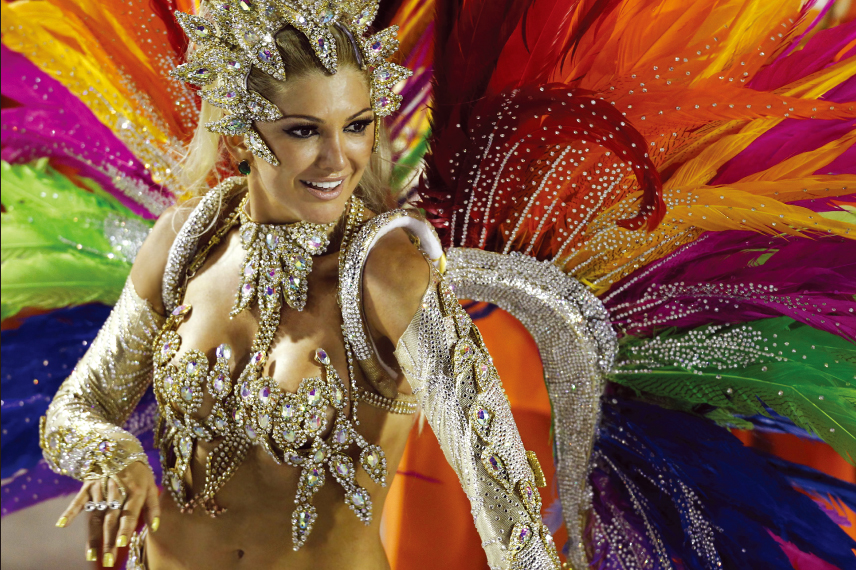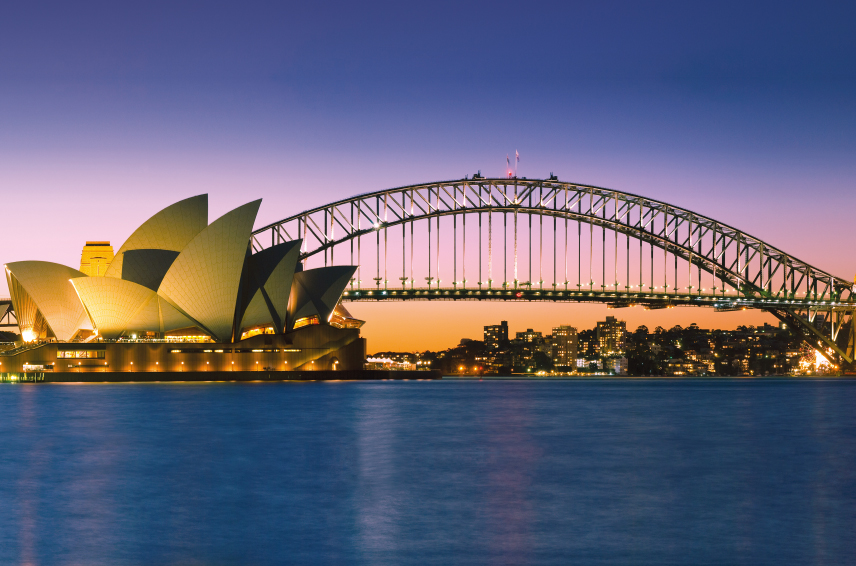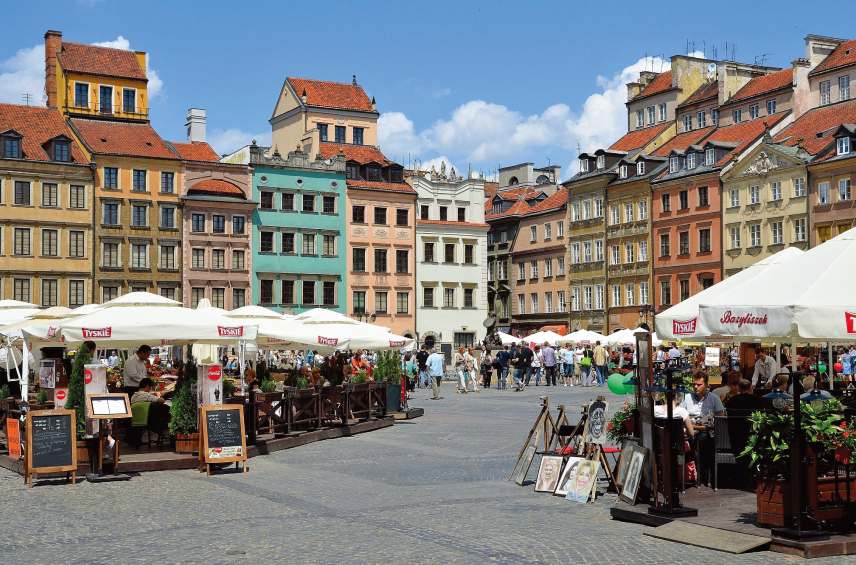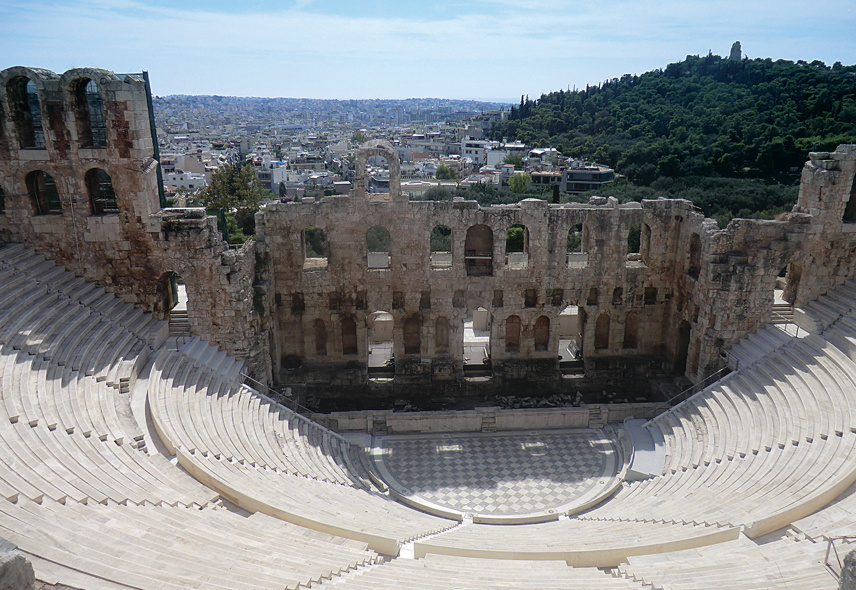
From a towering height of some 60 metres, as you gaze down the in-run of the Holmenkollen ski jump in Oslo, one particular thought proves almost inescapable – ski jumpers are definitely more than a little bit mad. Perhaps it is the fascination of this sport – one that can, and does, do serious damage to many participants – that attracts more than a million visitors to the hill each year. Regardless of the reason, it is Norway’s most popular tourist destination, and after all, there are few other cities that offer such a precipitous – and vertigo inducing – attraction, while also letting you ascend to the top to take in the view.
There’s a curious thing about Oslo – as you find your way around, you’ll end up wondering quite why you haven’t been there before. It could be that it’s the cost. You’ll soon discover that the ski jump slope isn’t the only steep aspect of the Norwegian capital. Its regular appearance in league tables of the world’s most expensive cities is perhaps enough to deter many visitors. That, however, would be a shame as Oslo is quite rightly earning plaudits as an up-and-coming travel spot.

In any event, is it right to judge the quality of any holiday solely on how much it costs? While “how far will my money go?” is a primary consideration for many travellers, it remains the case that New York, London, Sydney and Hong Kong are among the most expensive places on Earth to visit. They are, however, all hugely popular destinations, largely because, outlay aside, they offer truly priceless experiences. Can Oslo justifiably claim to be in the same travel league? The answer may surprise you. It’s definitely a location that has come in from the cold.
Let’s get back to the top of that ski jump though. As you gaze across at the Oslo Fjord from your elevated vantage point, it’s all too possible to take in “the blue and the green and the city in between.” It’s a truly stunning sight and one that neatly illustrates the changes taking place across the city.
Traditionally, Oslo was very much a low-rise conurbation, with only a handful of buildings more than 100 metres tall. Recently, a boom in commercial, retail and residential development has led to a wave of construction that has dramatically rejigged the skyline.
Fortunately, the emphasis has been on the aesthetic, with a number of developments – notably the Barcode project in Bjorvika and Aker Brygge (a former shipyard) – leading the way in reviving the city’s waterfronts. The jewel in the crown – and reason enough to visit Oslo in its own right – is the spectacular Opera House in the Bjorvika development area.
Opened in 2008, its gleaming angled exterior emerges from the fjord like a giant iceberg. You don’t just look at this 21st century wonder, however, you can actually walk over its roof and take in yet more panoramic vistas, as well as the floating She Lies sculpture, fetchingly anchored to a platform in the fjord. Inside, the hall is no less aesthetically pleasing, a testament to its sweeping marble and oak interiors, ingenious lighting and built-in art installations.
In essence, the whole point of the building is to attract people whether they’re going to an opera or ballet performance or not. On that front, it is a triumph, bringing in nearly as many visitors as the ski jump each year. A particular recommendation is the back stage tour, a chance to marvel at the sheer scale of the whole enterprise.

If it was its Opera House that helped put Sydney on the world map, this triumph of contemporary design promises to do something similar for Oslo. If you’re not in the mood for an aria or two, then simply go there for lunch, and then work it off afterwards with a nice overhead stroll.
Another building well worth seeking out for its undoubted wow factor is the Astrup Fearnley Museum set at the end of Aker Brygge. The museum is made up of three pavilions, all residing under a distinctive sail-shaped glass roof. Don’t just stand outside and stare, though. Inside you’ll find a significant collection of modern and contemporary art, together with a series of rotating exhibitions from international artists.
An iconic image wholly synonymous with the city is, of course, The Scream. Possibly inspired by a tourist discovering the price of a glass of beer, you can see the work in two of the city’s galleries – the National Gallery and the dedicated Munch Museum. In total, Edward Munch created four versions of his masterpiece in both paint and pastels. Look closely and you will be able to discern subtle variations in the backgrounds and the vividness of hues in the different versions. Three of the originals are still in Oslo, while the fourth was sold privately in 2012 for US$120 million. Munch is about more than just The Scream, however, and in particular, check out his Madonna, Sun, The Day After and The Dance of Life.
The best bargain (and there are some) for the price-conscious visitor has to be the Oslo Pass. This not only provides entry to virtually every museum and sight in the city, it also includes free public transport. At 355 Krone (US$40) for one day (or 620 Krone (US$70) for three days, it’s a veritable steal. It also comes with a useful app – Visit Oslo – and one that many other cities will soon be copying.
Although Oslo is compact enough, you’ll still need to use a bus or a boat to access the museum complex at Bygdoy, while the train is the best way of reaching Holmenkollen. Tram use is also included in the pass and it’s an easy system to get your head around.

Overall, you’re going to need a whole day to explore the peninsula of Bygdoy, not least because it’s home to at least six galleries. Here, the country’s seafaring prowess is very much to the fore, beginning with the Viking Ship Museum, home to three recovered burial boats from around the tenth century. If you close your eyes, you can almost see Kirk Douglas running across the outspread oars.
By contrast, the emphasis of the Fram Museum is on polar exploration. Within its walls, it intricately details the exploits of various Norwegian expeditions to both the North and South Poles.
Wackiest of all, is the Kon-Tiki Museum, a riotous celebration of the exploits of Thor Heyerdahl, the legendary maritime adventurer. Back in 1947, Thor and his crew set off from Peru aiming to cross the Pacific Ocean in a balsa wood raft, all part of a plan to prove his theories about inter-continental migration.
At the time, few expected to see them again. The voyage, however, proved a success, and in the name of science, Thor dreamt up further daring – some would say hare-brained – schemes, including sailing across the Atlantic in a reed boat. It’s the sort of inspired mad genius and Norwegian derring-do that becomes a little more understandable if you stand on top of that ski jump slope…

Back in the centre of the city, you’re going to get an awful lot more use out of that Oslo Pass. Alfred Nobel ensured that Oslo was put on the world map over a century ago, forever enshrined as the home of The Nobel Peace Prize. The Nobel Peace Centre celebrates the recipients of every Prize since 1901, though it’s fair to say, with the gift of hindsight, that some of the names might raise eyebrows today.
In reputational terms, on much safer ground is Henrik Ibsen, the renowned playwright (Hedda Gabler, A Doll’s House), known as “The father of realism.” Ibsen lived in the city for the last 15 years of his life, 11 of which were spent in an apartment, opposite the Royal Palace, now home to a museum dedicated to him. A guided tour of his preserved living quarters is recommended, not least to hear the story of his last words. On hearing his nurse inform a visitor that he was a lot better, he piped up: “On the contrary.” Realistic to the last.
Another of Oslo’s famous sons with his own museum is sculptor Gustav Vigeland, but for those visitors who have had their fill of exhibits, an introduction to his work can be found in the adjoining Frogner Park. A 46-foot high monolith of 121 human figures is a particular high point.
Overall, Norway took some time to emerge in the form we recognise today. For more than 400 years, it was united with Denmark. In 1814, Napoleon intervened and ceded Norway to the King of Sweden. Full independence arrived only as recently as 1905, with even that challenged by the 1940-1945 Nazi occupation.
It’s not just its sovereignty that has chopped and changed. While originally called Oslo, King Christian renamed the town Christiana after a 1624 fire necessitated extensive rebuilding. From 1877 the name was Kristiana, before it was changed back to Oslo in 1925. Are you keeping up?

You can discover much of this history courtesy, once more, of the Oslo Pass. The medieval Akershus Castle, the Norwegian Resistance Museum, Oslo Cathedral and the City Hall are all included within its remit and are all well worth a visit. Stortinget, the Norwegian Parliament, also offers one-hour tours on most Saturdays of the year. It’s free, but you can’t book in advance and numbers are limited to just 30.
As you might expect from a country that owes much of its wealth to its vibrant fishing trade, you will be getting plenty of Omega 3 down you as part of your Norwegian diet. In fact, Restaurant Fjord is somewhat reminiscent of the old Monty Python spam sketch in that it offers cod, cod, cod and cod on its sampler menu, ableit only in the cod season. How do they manage that? Tartare of cod, cod tongue (they have them and they’re big), fried cod roe and baked cod all form part of its repertoire. Other high-end restaurants in the city, however, offer more varied and more expansive menus. In particular, check out Hos Thea, Gamle Raadhus, Feinschmecker, Lofoten and Solsiden.
It’s natural to associate Oslo with winter – especially all those snow sports – but it’s equally beguiling in the summer, a time when you can hang out at the Aker Brygge, dining alfresco or taking a glass of wine or two. Or, perhaps, you’d prefer to take a boat trip or to pack a picnic and head to the park?
If you go in the summer, though, you will, of course, miss out on the winter weather that so defines the Norwegians. Go anytime that suits you is probably the best answer, but pay particular attention to just which clothes you pack.
Joking aside, is it really that expensive to visit Oslo? Well, it’s not cheap, but if, however, you’re looking for somewhere new, different, on the up -– and you’re used to paying London and New York prices – then the clear advice is: take the jump.



























